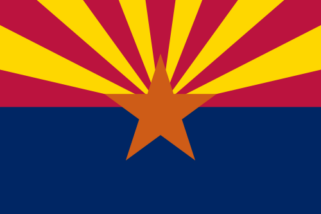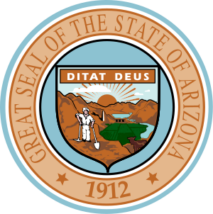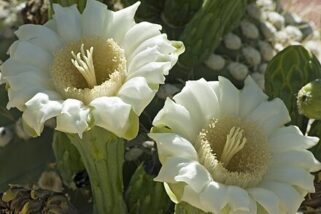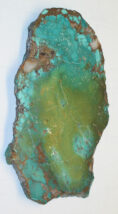advertisement
1 April 2024
Arizona, known for its unique identity and diverse landscapes, is home to various state symbols representing its rich heritage. From the iconic saguaro cactus to the resilient cactus wren, each emblem tells a story of Arizona’s natural beauty and cultural significance. Let’s look closely at some of Arizona’s state symbols and key facts about the state.
 AZ State Flag
AZ State FlagThe Arizona State Flag features alternating red and yellow rays, symbolizing the 13 original colonies and the setting sun of the western landscape. The blue bottom half represents the U.S. flag, while the copper star signifies Arizona’s leading role in copper production.
 AZ State Seal
AZ State SealThe state seal portrays a scene of agricultural abundance, with irrigated fields, orchards, and grazing cattle against a backdrop of mountains. A miner with a pick and shovel represents Arizona’s mining heritage and the motto “Ditat Deus,” which means “God enriches.”
Arizona has two state songs: the “Arizona March Song” and “Arizona” by Rex Allen Jr., both of which celebrate the state’s scenic beauty and spirit.
 AZ State Flower
AZ State FlowerSymbols like the Saguaro cactus flower and turquoise gemstone embody Arizona’s natural wonders, while the Palo Verde tree and cactus wren highlight the state’s diverse flora and fauna.
 AZ State Neckwear
AZ State NeckwearThe bola tie, designated as the state neckwear, reflects Southwestern style and craftsmanship and showcases Arizona’s artistic tradition.
 AZ State Gemstone
AZ State GemstoneTurquoise was named Arizona’s state gemstone in 1974. This blue-green stone with a waxy surface has been a staple in Southwest Indian Jewelry for centuries. Composed of hydrous oxide of aluminum and copper, it’s abundantly found throughout the region.
Phoenix is the state capital and largest city, with a population of over 6.6 million. Arizona’s nickname, the Grand Canyon State, pays tribute to one of its most famous natural landmarks. Spanning over 113,000 square miles, Arizona offers vast landscapes and diverse communities.
Arizona’s rich heritage and natural beauty come to life through its state symbols and quick facts. From its iconic landscapes to its vibrant culture, Arizona continues to captivate residents and visitors with its enduring spirit and dynamic identity.
advertisement
Arizona is a hiker’s paradise, whether you’re a seasoned adventurer or a casual weekend explorer, the state has a trail for every style, season, and skill level. Here are some of the best places to hike in Arizona. advertisement 1. Cathedral Rock – Sedona Difficulty: Moderate to strenuous Why It’s Amazing: This iconic red-rock formation offers one of Sedona’s most breathtaking climbs. The trail is steep, hands-on, and rewarding with unforgettable panoramic views. 2. Camelback Mountain – Phoenix Difficulty: Strenuous Why It’s Amazing: One of the most famous urban hikes in the country, Camelback delivers challenging scrambles, busy energy, and
When most people picture Arizona, they imagine cactus-filled deserts and blazing summer heat. But head north or climb in elevation, and a completely different side of the state appears: powdery snow, pine forests, cozy cabins, and ski runs with sweeping mountain views. Arizona’s snowy adventures offer a surprising winter escape for travelers who want chill instead of sizzle. advertisement Where to Find Snow in Arizona Snow in Arizona is all about elevation. The higher the climb, the better the chance of a winter wonderland. Northern and eastern Arizona are the prime regions for cold-weather fun, with pine-covered plateaus and mountain
Arizona, with its impressive diversity, surprises newcomers and constantly defies stereotypes. While many people picture endless deserts, triple-digit temperatures, and sunburn as far as the eye can see, the reality is far more varied. Here are the top 10 misconceptions about Arizona, and the truth behind them. advertisement 1. Arizona Is Just a Hot, Dry Desert Most people imagine the entire state melting under 115°F heat. And while parts of Arizona (like Phoenix and Yuma) are famously sizzling, the state also has snow-covered mountains, forests, alpine lakes, and ski resorts. Flagstaff, for example, sits at around 7,000 feet in altitude
A towering wall of dust can roll across central Arizona on a monsoon evening, swallowing skylines, grounding flights, and cutting visibility to near zero across parts of the Phoenix metro. Spectacular? Absolutely. Routine? In the Southwest, yes. These dramatic dust storms—called haboobs—are a hallmark of Arizona’s summer monsoon. Here is what they are, how they form, and how to stay safe when one arrives. advertisement What Is a Haboob? A haboob is a fast-moving dust storm generated by thunderstorm outflow winds. As a storm cell collapses or surges forward, dense, cool air rushes toward the ground and spreads outward like
advertisement
| Cookie | Duration | Description |
|---|---|---|
| cookielawinfo-checkbox-analytics | 11 months | This cookie is set by GDPR Cookie Consent plugin. The cookie is used to store the user consent for the cookies in the category "Analytics". |
| cookielawinfo-checkbox-functional | 11 months | The cookie is set by GDPR cookie consent to record the user consent for the cookies in the category "Functional". |
| cookielawinfo-checkbox-necessary | 11 months | This cookie is set by GDPR Cookie Consent plugin. The cookies is used to store the user consent for the cookies in the category "Necessary". |
| cookielawinfo-checkbox-others | 11 months | This cookie is set by GDPR Cookie Consent plugin. The cookie is used to store the user consent for the cookies in the category "Other. |
| cookielawinfo-checkbox-performance | 11 months | This cookie is set by GDPR Cookie Consent plugin. The cookie is used to store the user consent for the cookies in the category "Performance". |
| viewed_cookie_policy | 11 months | The cookie is set by the GDPR Cookie Consent plugin and is used to store whether or not user has consented to the use of cookies. It does not store any personal data. |
